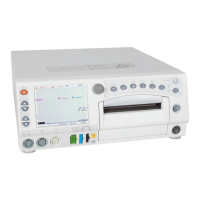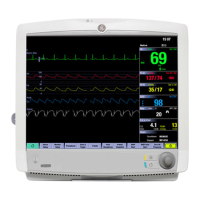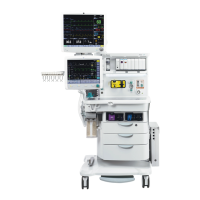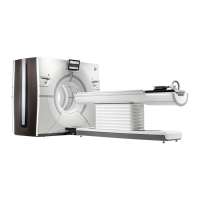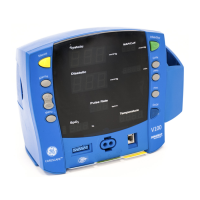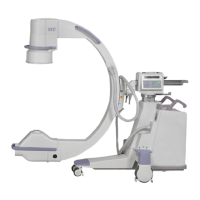5-4 170 Series Monitor Revision D
2003023-001
Fetal Heart Rate Monitoring: FECG (Internal Method)
FECG (Internal Method)
Methodology
This method uses an electrode attached directly to the fetal presenting part. The
electrode is connected to the cable/legplate secured to the mother. The fetal heart
rate is computed based upon the interval between successive R-wave peaks of the
fetal QRS complex.
The fetal heart rate is displayed in BPM and continuously plotted on the strip chart
recorder paper.
Artifact Elimination
NOTE: This feature only affects direct
FECG monitoring. Ultrasound
monitoring is unaffected by this setting.
An ECG artifact elimination feature is available on Models 173 and 174.
Enabling/Disabling Artifact Elimination
This feature is enabled/disabled via a service setup mode. (The factory default
setting is off.) Refer to the “170 Series Service Manual” for more information.
Theory and Methodology
When ECG artifact elimination is turned on, the monitor will not print any new FHR
value which differs by more than ±25 BPM from the previously calculated heart rate
value. The printing inhibition functions on a beat-to-beat basis by comparing the
last calculated rate against the newly calculated rate. The rate used for comparison
purposes is always the previous rate regardless of whether this rate passed the
previous ±25 BPM test. When ECG artifact elimination is turned off, all direct ECG
rates are plotted by the recorder without regard to their deviation from previous
rates. The effect of this function change is that sudden heart rate changes (such as
certain arrhythmias, accelerations, or decelerations) as well as artifactual changes
(as when the electrode is disturbed or loosely connected) are not recorded when
ECG artifact elimination is turned on; instead gaps in the tracing occur.
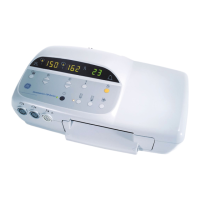
